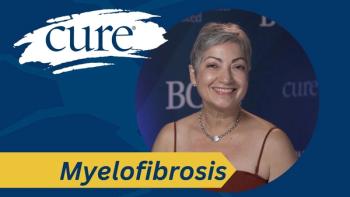
Peripheral Neuropathy Is ‘Underestimated’ in Patients Undergoing Cancer Treatment
Chemotherapy-induced peripheral neuropathy is a common side effect of patients undergoing cancer treatment, though many patients are not fully informed about the condition before their therapy starts.
While chemotherapy-induced peripheral neuropathy (CIPN) is a common side effect of chemotherapy treatment, many patients lack knowledge about the condition and how it can impact their day-to-day life, according to recent research presented at the 2022 Oncology Nursing Society Annual Congress.
“Overall, enhancing patient education and communication about CIPN is necessary because CIPN is a side effect that is underestimated by patients beginning chemotherapy, and may adversely affect chemotherapy dosing and physical functioning,” study author Robert Knoerl, an oncology nurse from the University of Michigan, said while presenting the data.
CIPN is a condition that presents as numbness, tingling or pain in the hands and feet, and is not only bothersome, but can put patients at higher risk for falls and subsequent injury. There is currently no cure for CIPN.
The researchers sent questionnaires to adult patients who underwent fewer than three infusions of neurotoxic chemotherapy for sarcoma, blood, breast or gastrointestinal cancers. Ninety-two patients responded to the questions, which inquired about expectations about developing CIPN, type of education they received about CIPN (if any) and any CIPN symptoms they were experiencing, per the PRO-CTCAE, which is a validated measure for documenting cancer-related side effects.
While about half (48%) of patients were experiencing at least mild CIPN at the time of the survey, though many in the overall population did not expect the condition to occur.
“Most either did not expect to develop CIPN during neurotoxic chemotherapy (about 45%), or were unaware of the symptoms of neuropathy (30%),” Knoerl said. “Unsurprisingly, most patients who reported CIPN was expected developed CIPN.”
When it came to patient education around CIPN, the most common method was a verbal conversation with health care providers, followed by teaching sheets, no education and video education.
“Most clinicians reviewed the symptoms of CIPN, but less information was provided about the impact that CIPN may have on physical function, chemotherapy dose or treatment options,” Knoerl said, noting that previous research has shown that the development of CIPN — especially if it is severe — can result in dose reductions of the chemotherapy agents being used to treat the cancer.
While the study was limited by not having a diverse population (76% of the patients were female, 91% were white, and 48% were diagnosed with breast cancer), Knoerl hopes that the results will highlight the necessity of patient-provider communication about CIPN.
“Our results demonstrate the need for future research to increase patient's understanding of CIPN to promote the early identification and management of CIPN,” he said.




